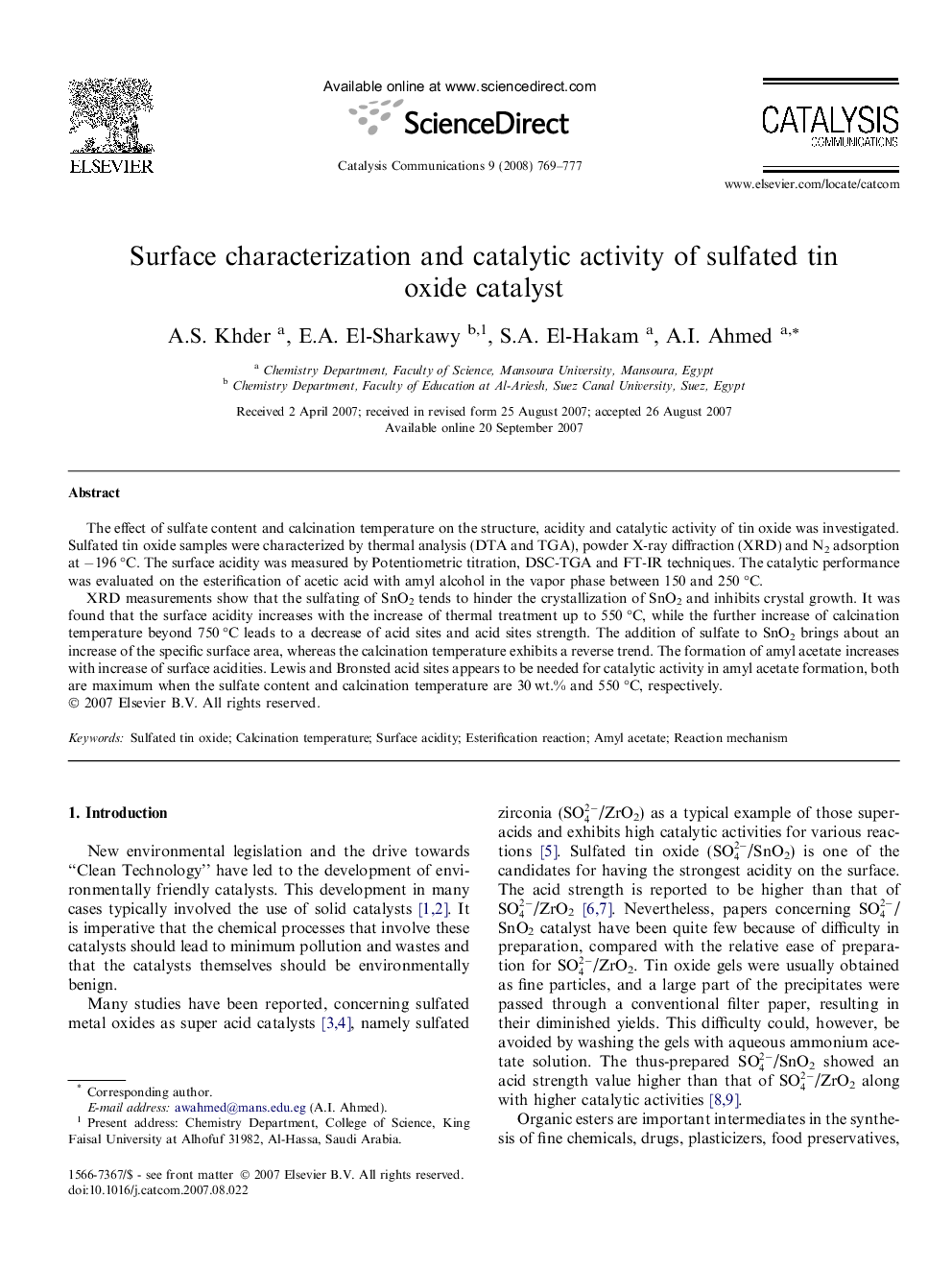| Article ID | Journal | Published Year | Pages | File Type |
|---|---|---|---|---|
| 52252 | Catalysis Communications | 2008 | 9 Pages |
The effect of sulfate content and calcination temperature on the structure, acidity and catalytic activity of tin oxide was investigated. Sulfated tin oxide samples were characterized by thermal analysis (DTA and TGA), powder X-ray diffraction (XRD) and N2 adsorption at −196 °C. The surface acidity was measured by Potentiometric titration, DSC-TGA and FT-IR techniques. The catalytic performance was evaluated on the esterification of acetic acid with amyl alcohol in the vapor phase between 150 and 250 °C.XRD measurements show that the sulfating of SnO2 tends to hinder the crystallization of SnO2 and inhibits crystal growth. It was found that the surface acidity increases with the increase of thermal treatment up to 550 °C, while the further increase of calcination temperature beyond 750 °C leads to a decrease of acid sites and acid sites strength. The addition of sulfate to SnO2 brings about an increase of the specific surface area, whereas the calcination temperature exhibits a reverse trend. The formation of amyl acetate increases with increase of surface acidities. Lewis and Bronsted acid sites appears to be needed for catalytic activity in amyl acetate formation, both are maximum when the sulfate content and calcination temperature are 30 wt.% and 550 °C, respectively.
